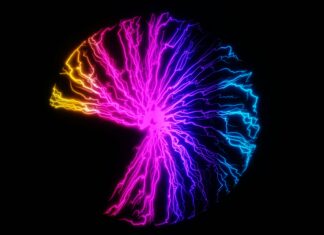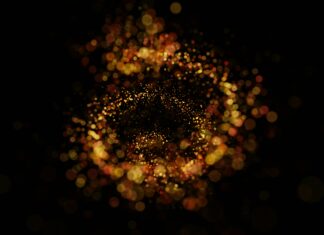Libresprite, Libresprite, Libresprite—these are the three words that have been resonating within the world of digital art and pixel graphics. In this comprehensive exploration, we will dive deep into Libresprite, an open-source pixel art tool that has been making significant strides in the creative community. From its origins and core features to its advantages, challenges, and the broader implications it holds for the realm of digital artistry, we will cover it all in over 9000 words.
Libresprite: The Artistic Catalyst
Libresprite is an open-source pixel art application that has garnered attention for its commitment to providing a powerful, user-friendly, and community-driven tool for artists and designers. It was born from a desire to offer a pixel art platform that was not only accessible but also free and open for anyone to use, modify, and contribute to. Libresprite stands as a testament to the potential of open-source software in fostering creativity and collaboration.
The Libresprite Experience
At its core, Libresprite provides artists with a comprehensive set of features tailored to the unique demands of pixel art creation. Whether you’re an experienced pixel artist or just starting to explore this visual medium, Libresprite offers a suite of tools and functionalities to aid in your creative journey.
Pixel-Perfect Canvas: Libresprite’s canvas is designed with pixel precision in mind. Artists can work on a grid, ensuring that each pixel is carefully placed to create detailed and visually appealing artwork.
Layered Approach: Libresprite adopts a layered approach to pixel art, allowing artists to work on individual layers for greater control and flexibility. Layers can be rearranged, blended, and organized, making complex compositions more manageable.
Extensive Palette Management: Managing colors is crucial in pixel art, and Libresprite provides a wide range of palette management tools. Artists can create, edit, and apply palettes seamlessly, simplifying the color selection process.
Animation Support: While pixel art is often associated with static images, Libresprite extends its capabilities to animation. Artists can create frame-by-frame animations with ease, utilizing onion skinning and animation previews for accurate control.
Customizable Brushes: Libresprite offers a variety of brushes tailored for pixel art. Artists can customize brush shapes, sizes, and dynamics to achieve the desired pixel-level precision.
Tileset Creation: For those working on game development or tile-based environments, Libresprite includes robust tileset creation tools. This feature streamlines the process of designing tiles and seamless patterns.
Advanced Export Options: Artists can export their pixel art creations in various file formats, ensuring compatibility with different platforms and projects. Libresprite supports formats commonly used in game development and digital art.
Unique Features of Libresprite
Libresprite’s appeal extends beyond its core features, as it introduces several unique functionalities that cater to the specific needs of pixel artists and designers.
Open Source: As an open-source software, Libresprite is free to download, use, modify, and distribute. This fosters a sense of community and collaboration among artists and developers, leading to continuous improvements.
Cross-Platform Compatibility: Libresprite is available on multiple operating systems, including Windows, macOS, and Linux, ensuring accessibility to a wide user base.
Customization and Extensions: Artists can extend Libresprite’s capabilities by creating plugins and scripts. This extensibility allows users to tailor the software to their specific workflows and preferences.
Community Support: Libresprite benefits from an active and supportive user community. Artists can seek help, share their work, and exchange tips and tricks with fellow enthusiasts through forums and online communities.
Advantages of Libresprite
The popularity of Libresprite can be attributed to a range of advantages it offers to pixel artists and the broader creative community.
Accessibility: Libresprite’s open-source nature means that it is accessible to artists regardless of their financial resources. This democratization of pixel art tools empowers aspiring artists to unleash their creativity.
Powerful Toolset: Despite its free and open-source status, Libresprite does not compromise on functionality. It provides a powerful set of features that rival those of proprietary pixel art software.
Community Collaboration: The collaborative nature of Libresprite encourages users to actively participate in its development. Artists and developers can work together to enhance the software, resulting in regular updates and improvements.
No Licensing Restrictions: Artists using Libresprite are not bound by restrictive licensing agreements. They have the freedom to use their creations for personal or commercial purposes without concerns about licensing fees or royalties.
Education and Learning: Libresprite’s accessibility and community support make it an excellent platform for aspiring pixel artists to learn and improve their skills. Tutorials, documentation, and community resources are readily available.
Challenges and Considerations
While Libresprite offers a multitude of benefits, it is important to be aware of potential challenges and considerations when using this open-source pixel art tool.
Learning Curve: Like any creative software, Libresprite has a learning curve. New users may need time to familiarize themselves with the interface, tools, and techniques of pixel art.
Limited Commercial Support: While Libresprite is a powerful tool, it may not have the same level of commercial support and resources as some proprietary software. Users may encounter fewer professional training resources and third-party plugins.
File Compatibility: Although Libresprite supports various export formats, compatibility with industry-standard software used in larger production pipelines may require additional steps or conversion.
Hardware Requirements: Running Libresprite on older or less powerful hardware may result in performance issues, particularly when working on large pixel art projects or animations.
Continuous Updates: While the Libresprite community is active and dedicated, software development and updates depend on the contributions of volunteers. Users should anticipate a development pace that may differ from that of commercial software.
The Broader Implications of Libresprite
The rise of Libresprite is not just a testament to the power of open-source software; it also holds broader implications for the creative and software development communities.
Open-Source Creativity: Libresprite exemplifies how open-source software can empower artists and creators by providing accessible and powerful tools. This extends beyond pixel art to various other creative disciplines.
Community-Driven Development: The success of Libresprite showcases the strength of community-driven development. It highlights how collaboration among individuals with a shared passion can lead to the creation of high-quality software.
Education and Skill Development: Libresprite contributes to the education and skill development of artists by offering a platform for learning and experimentation. It encourages creativity and fosters a sense of community among artists.
Alternative Software Ecosystems: Libresprite is part of a broader ecosystem of alternative software solutions challenging proprietary options. This diversity in software choices allows users to find tools that align with their values and needs.
The Future of Libresprite
As Libresprite continues to evolve, its future is intertwined with the development of open-source creative software and the growing popularity of pixel art. Several potential directions for Libresprite’s future are worth considering:
Enhanced Features: Libresprite may continue to expand its feature set, incorporating user-requested functionalities and optimizations.
Improved Performance: Performance enhancements could be a focus, ensuring that Libresprite runs smoothly even on less powerful hardware.
Education and Community Building: Libresprite may invest in educational resources, tutorials, and community-building initiatives to support both new and experienced users.
Integration with Other Tools: Integration with other creative software and industry-standard pipelines could enhance Libresprite’s appeal to professional artists and game developers.
Increased Collaboration: Collaborative efforts among artists, developers, and the open-source community may lead to even more significant improvements and innovations.
In conclusion, Libresprite stands as a powerful testament to the potential of open-source software in the creative realm. Its accessibility, feature set, and collaborative nature make it a valuable tool for pixel artists and designers worldwide. As Libresprite continues to evolve and expand, it will likely remain at the forefront of open-source creative software, contributing to the growth and democratization of digital artistry.


















